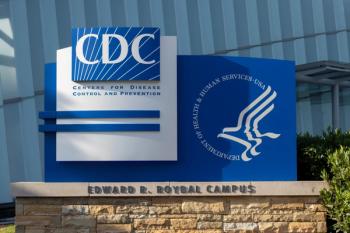
Minority Patients Less Likely to Seek Health Care for Psoriasis
Only 38.3% of non-Hispanic minorities with psoriasis visited a dermatologist.
Psoriasis can affect nearly any patient, regardless of age, race, or gender. Despite the prevalence of the condition, minority patients may not seek care from a health care provider for psoriasis, according to a study published by the Journal of the American Academy of Dermatology.
The analysis revealed that minorities who are black, Asian, and non-Hispanic are approximately 40% less likely to visit a dermatologist for psoriasis compared with whites.
The authors also found that whites with psoriasis had double the number of physician visits compared with non-Hispanic minorities; however, the rate was similar among whites and Hispanics, according to the study.
The autoimmune condition can appear anywhere on the skin, including the face and hands. Psoriasis is also known to impact quality of life and can even increase the risk of heart attack, stroke, and mortality, which emphasizes the importance of
“While psoriasis is less common among minorities, previous research has shown their disease can be more severe. Despite that, this study shows minorities are less likely to see a dermatologist for treatment,” said senior author Junko Takeshita, MD, PhD, MSCE.
The authors examined data from the Medical Expenditure Panel Survey, which includes self- or caregiver-reported information from interviews with 842 patients with psoriasis.
Overall, the authors found that 50.8% of whites sought dermatologic care for psoriasis compared with only 38.3% of non-Hispanic minorities. Approximately 46.7% of Hispanics visited a dermatologist for the condition.
The results showed that whites averaged 2.69 dermatologist visits per year, while Hispanics averaged 1.87 visits. Comparatively, non-white Hispanic minorities with psoriasis averaged 1.3 visits per year, significantly less than whites.
The authors projected that non-Hispanic minorities had 3 million fewer dermatologist visits per year compared with whites.
“When you combine the results of our study with the knowledge that psoriasis severity and quality of life impact suggest a larger burden of psoriasis among minorities, it brings into focus the racial gaps that exist in psoriasis care,” Dr Takeshita said.
These findings highlight the significant gaps in care faced by racial minorities, but more research is needed to determine what causes these gaps and if they correlate to disease severity, according to the authors.
“Ultimately, increasing awareness of these disparities is the first step in trying to provide equitable care and improve outcomes for all individuals with psoriasis,” Dr Takeshita concluded.
Newsletter
Stay informed on drug updates, treatment guidelines, and pharmacy practice trends—subscribe to Pharmacy Times for weekly clinical insights.




















































































































































































































